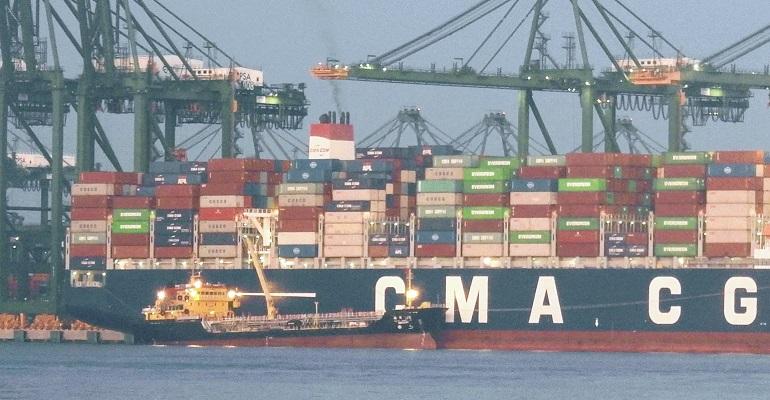Quoted in the Financial Times newspaper, hedge fund manager Pierre Andurand warned that “we’re not going back to normal business in a few months”. Warning that crude prices could hit $250 later in the year, he said that Europe has probably lost Russian supplies “for ever”.
Bunker costs, of course, correspond closely to crude oil prices. As Brent crude climbed to $122 yesterday, very low sulphur fuel oil added $34 in Singapore to reach $930.50 and climbed by more than $26 to hit $947 in Fujairah. Corresponding prices were $924.50 in Rotterdam and $960.50 in Houston, according to Ship&Bunker.
Meanwhile, the European Union is scrambling to replace Russian gas imports with supplies from elsewhere. The bloc is aiming to import an extra 50bn cubic metres from producers including Egypt, Qatar and the US. However, much of these exporters’ production is already committed on long-term contracts and analysts warn that extra marginal supplies are limited.
European Commission President, Ursula von der Leyen, held talks with US President, Joe Biden, during a Brussels summit on Thursday and an increase in LNG imports from the US could be announced sometime today, Friday. According to EU data, the US supplied 22bn cubic metres of LNG to Europe in 2021.
However, there is a looming shortage of regasification capacity in Europe since a significant volume of imported gas has been shipped by pipeline until now.
Building new shore-based regasification facilties is a lengthy business – sensitive in terms of location both from grid connectivity and environmental angles. The quickest and most affordable option is floating gas plant, either conversions from older LNG tankers to floating storage and regasification units (FSRUs), or regas barges linked by pipeline to shoreside gas grids.
Copyright © 2024. All rights reserved. Seatrade, a trading name of Informa Markets (UK) Limited.
Add Seatrade Maritime News to your Google News feed.  |

